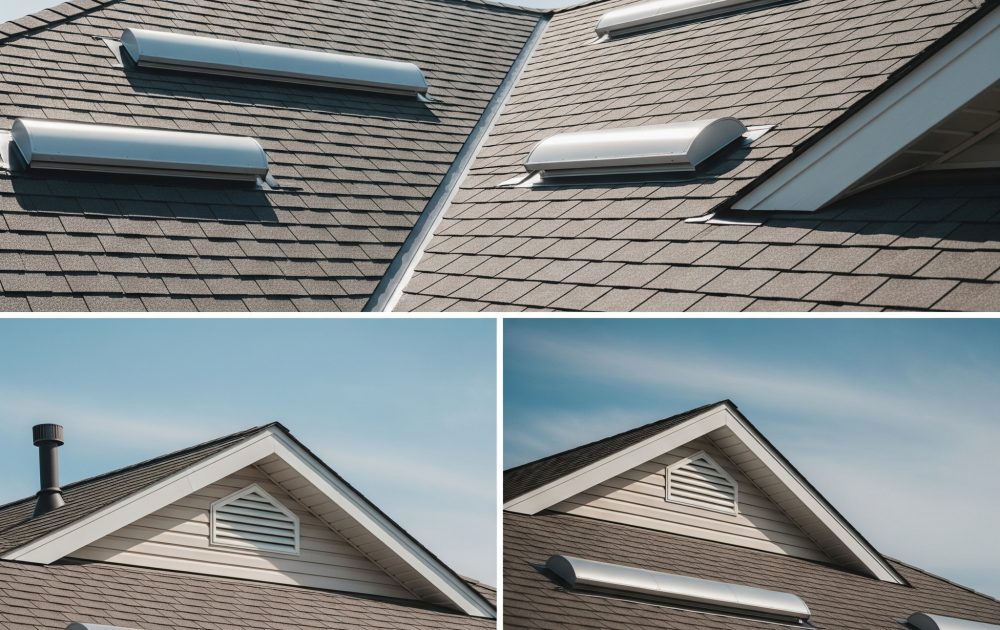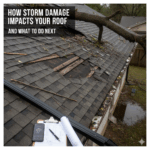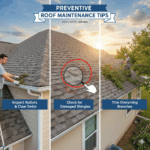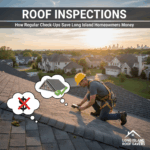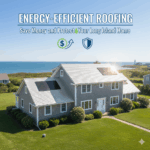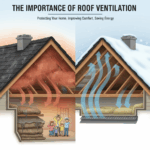When homeowners think about roof care, most focus on visible elements like shingles, flashing, and gutters. However, one of the most overlooked—yet crucial—components of a healthy and long-lasting roof is ventilation. Proper roof ventilation plays a vital role in protecting your home, controlling energy costs, and extending the life of your roofing system.
In this blog post, the experts at ELED Construction break down why roof ventilation matters, how it works, and how to know if your roof’s ventilation system is doing its job.
Need help with your roof? Call (631) 552 6884 or request your free estimate.
What Is Roof Ventilation?
Roof ventilation refers to a system of intake and exhaust vents installed in your attic or roof structure that help circulate air. The primary goal is to allow warm, moist air to escape while drawing in cool, dry air.
A typical ventilation system includes:
-
Intake vents (usually at the soffits or eaves)
-
Exhaust vents (at the ridge, gable, or through roof-mounted fans)
When installed and balanced properly, these vents create a continuous flow of air that protects your roof and attic space from extreme temperature fluctuations and moisture buildup.
Why Is Roof Ventilation Important?
1. Extends Roof Lifespan
Heat and moisture buildup can slowly deteriorate roofing materials from the inside out. In summer, attics can reach over 150°F without proper ventilation. That excessive heat can cause shingles to warp, crack, or age prematurely.
In winter, inadequate ventilation can lead to ice dams, where melting snow refreezes at the roof edge, damaging shingles and causing leaks. Ventilation mitigates both of these seasonal risks.
2. Reduces Energy Costs
Good roof ventilation can make a significant impact on your home’s energy efficiency. In hot weather, it allows heat to escape, reducing the burden on your air conditioning system.
According to the U.S. Department of Energy, homeowners can save up to 10–15% annually on cooling bills by maintaining a properly ventilated attic space.
3. Prevents Moisture & Mold
Moisture is one of the biggest enemies of a roof. Everyday activities like cooking, bathing, and doing laundry create indoor moisture that rises into the attic. If not properly vented, it condenses into water droplets that soak into insulation, wood, and drywall—creating the perfect environment for mold and rot.
Proper airflow dries out the attic space and prevents costly water-related damage.
4. Improves Indoor Comfort
Without proper ventilation, rooms upstairs can become excessively hot in summer and drafty in winter. Balanced attic airflow stabilizes indoor temperatures, helping your HVAC system work more efficiently and improving overall comfort throughout the home.
Signs Your Roof Ventilation May Be Failing
If you notice any of the following issues, it may be time to inspect or upgrade your ventilation system:
-
Uneven roof temperatures or ice dams in winter
-
Excessive attic heat in summer
-
Mold or mildew odors in the attic
-
Peeling paint or wallpaper due to trapped moisture
-
Rust or corrosion on metal components in your attic
-
Curled or blistering roof shingles
These symptoms point to poor air circulation—and if left unaddressed, can lead to costly repairs down the road.
Roof Ventilation Options
At ELED Construction, we tailor your ventilation solution to the design and slope of your roof. Here are the most common systems we install:
-
Ridge Vents: Installed at the peak of a sloped roof to allow warm air to escape.
-
Soffit Vents: Located under eaves, drawing in cooler outside air.
-
Gable Vents: Found in the end walls of attics, helping with cross-ventilation.
-
Turbine Vents: Wind-powered and highly effective for large attic spaces.
-
Power Vents: Electrically powered exhaust fans that push hot air out of the attic.
The right system depends on your home’s layout, local climate, and roofing materials.
Why Choose ELED Construction for Roof Ventilation?
With years of experience serving residential and commercial clients across the region, ELED Construction offers:
-
Expert roof inspections
-
Custom ventilation planning
-
Licensed and insured roofing professionals
-
High-quality materials and workmanship
-
Full transparency and honest estimates
We don’t just treat the symptoms—we address the cause.
Call (631) 552 6884 to schedule your inspection or get a free estimate.
Seasonal Ventilation Tips
Proper ventilation is a year-round investment. Here’s how to stay ahead:
Spring/Summer
-
Check for blockages in soffit and ridge vents.
-
Clear away any leaves or nests.
-
Schedule an attic inspection to assess airflow.
Fall/Winter
-
Insulate your attic floor to prevent warm air from rising.
-
Watch for signs of condensation or frost inside the attic.
-
Make sure snow isn’t blocking roof vents.
Conclusion
Roof ventilation is one of the most underrated components of your home’s roofing system—but it plays a critical role in keeping your roof structurally sound, energy-efficient, and safe. Whether you’re building a new roof or maintaining an existing one, investing in the right ventilation solution can extend its lifespan by years.
At ELED Construction, we’re here to help you make smart, lasting improvements to your home. Contact us today at (631) 552 6884 or request your free estimate here.

